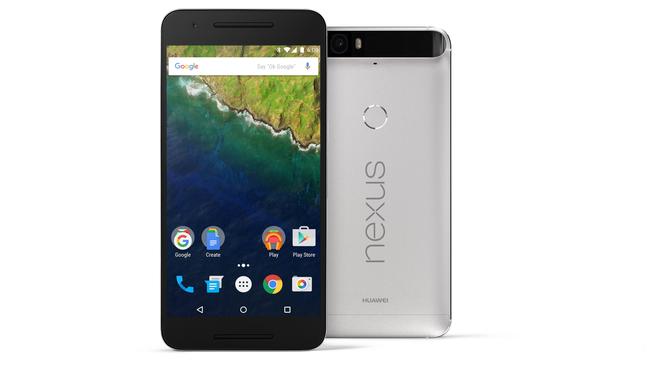Huawei Nexus 6P matches the iPhone 6s Plus
This Huawei Nexus 6P is $180 cheaper than the iPhone 6S Plus. It doesn’t compromise on features or power.

Each year Google commissions phones from various manufacturers and calls them Nexus. It bundles the hardware with the latest Android operating system, currently 6.0 Marshmallow.
The aim is to give you the ultimate Android experience. You get a vanilla Android phone, a pure strain without extra software layers manufacturers add to their own branded devices. It guarantees you early and regular Android updates.
I have been trialling the Nexus 6P. It’s the first Nexus phone the US-headquartered Google commissioned from China’s Huawei in a historic tie-up.
How much did I enjoy the 6P? Enough to keep wanting to use it. There wasn’t a single poorly executed feature. I didn’t have an urge to pick up another handset. The Nexus 6P is an aluminium-bodied phone with a large 5.7-inch, quadHD display. Its screen is a tad bigger than iPhone 6s Plus, yet overall the 6P is lighter and about the same body size.
Larger phones are gaining in popularity. Display resolution is excellent at 518 pixels per inch screen density. Video is crisp and audio rich, thanks to dual front-facing speakers.
The Nexus 6P (pictured) and its smaller cousin, LG’s Nexus 5X, feature a rear fingerprint scanner that uses Google’s new biometric recognition software — Nexus Imprint. I could pick up a locked phone with a blank screen, touch the scanner on the back with my finger and, in an instant, unlock it.
The phone has solidly specced cameras: 12 megapixel on the back and 8MP on the front. Even selfies look sharp. The back-facing camera performed particularly well in low light conditions and shoots 4K video. It’s also quick, thanks to its Snapdragon 810 eight-core processor, and has an NFC chip, so it can be adapted to wireless payments.
The 6P has what I need without any deal-breaking major weakness. However, there is no micro SD card slot so it doesn’t support expanded storage. And it has USB Type-C instead of standard UBS2.0 or 3.0. USB-C is not so common yet. Google offers a USB to USB-C charging cable and you can use it to connect the 6P to a computer.
At $899 for an entry-level model, it is cheaper than the similarly sized iPhone 6s Plus that start at $1079, or the Samsung S6 Edge, which starts from $1199.
Rating: 4 out of 5
Question: Can Apple TV stream recorded free-to-air programs?
Answer: Yes.
While it’s been possible to stream videos included connected TV recordings to Apple TV via AirPlay, the upgraded, flexible Apple TV with its own app store is letting developers’ creative juices flow.
Everything from classic movies, workouts, weather, catch-up TV, streaming services and games to renting accommodation through Airbn is part of the app offering. Just as you might click on the Netflix or Stan app, you’ll click on an Apple TV app to bring up your latest recorded movies.
Apple TV can’t record free-to-air TV, but I’ve been setting it up to play recorded TV back as part of a general rejig of my home theatre setup. That rejig is not just about having a better TV (ultra high-definition 4K) but bringing my recorded TV, and collections of films and TV series, photos and music and home videos, to every room at home and every device.
Each family member can watch a different show using a different streaming service or a different gaming console, simultaneously, while connected online. That’s the essence of the modern, connected home.
Smart TVs have their own recorded TV apps but digital rights management often prevents viewing of recorded programs away from that smart TV.
My setup uses a central network attached storage box that I connect by cable to the home modem/router for faster streaming. I use its five terabytes of storage not just for media but as a destination for computer backups such as Apple Time Machine.
NAS boxes by Taiwan manufacturers Synology and Asustor have fast processors capable streaming video across your home network.
The latest stream ultra-high-definition content. Sticking a USB TV tuner into the Synology NAS box turns it into a personal video recorder. I can then use the Plex app on Apple TV to watch recordings on the home theatre screen, or to another TV via Apple TV or Google Chromecast.
I also have an older computer display with a $50 Raspberry Pi glued to the back that plays all of this content included recorded TV — transcoded and served to it by the NAS. Setting it up was straight forward and involved installing Plex for Raspberry PI from www.rasplex.com.
Asustor has added an HDMI port to its latest NAS. You can store films on it and bring them straight to your loungeroom screen using an HDMI cable. All of this means I don’t need a personal video recorder.


